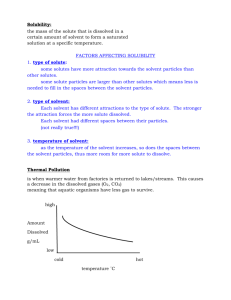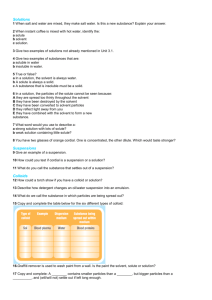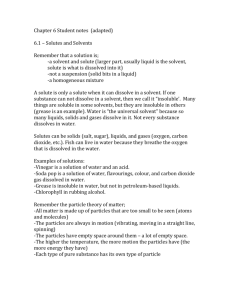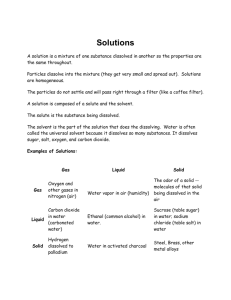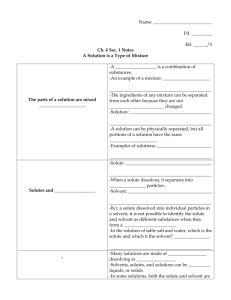File
advertisement
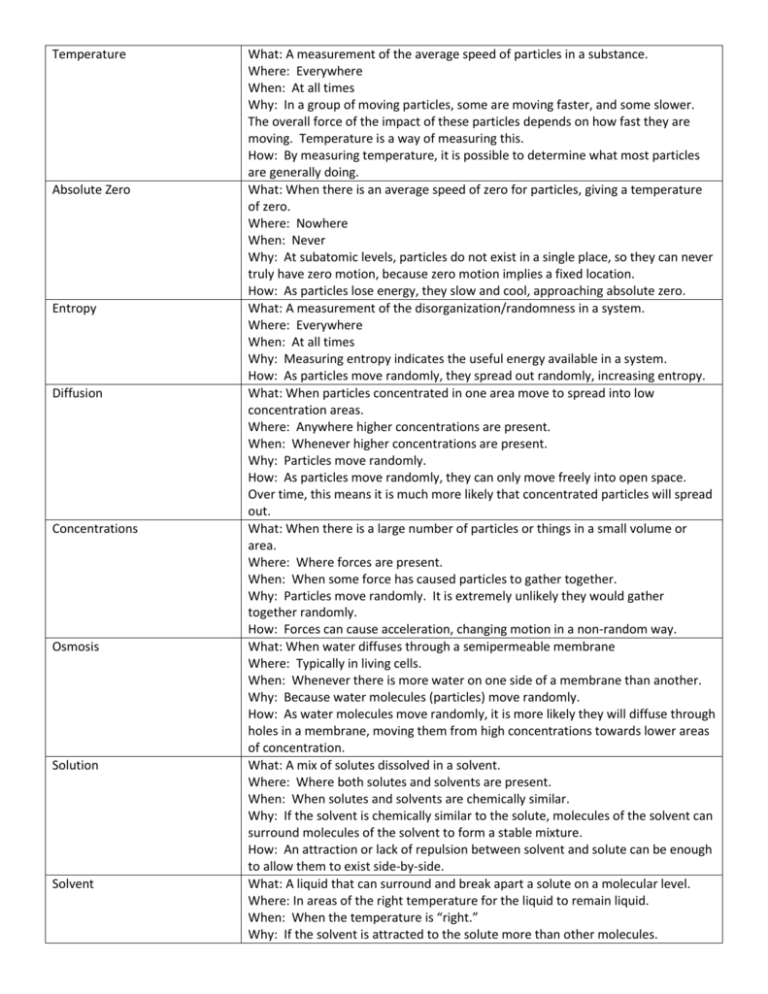
Temperature Absolute Zero Entropy Diffusion Concentrations Osmosis Solution Solvent What: A measurement of the average speed of particles in a substance. Where: Everywhere When: At all times Why: In a group of moving particles, some are moving faster, and some slower. The overall force of the impact of these particles depends on how fast they are moving. Temperature is a way of measuring this. How: By measuring temperature, it is possible to determine what most particles are generally doing. What: When there is an average speed of zero for particles, giving a temperature of zero. Where: Nowhere When: Never Why: At subatomic levels, particles do not exist in a single place, so they can never truly have zero motion, because zero motion implies a fixed location. How: As particles lose energy, they slow and cool, approaching absolute zero. What: A measurement of the disorganization/randomness in a system. Where: Everywhere When: At all times Why: Measuring entropy indicates the useful energy available in a system. How: As particles move randomly, they spread out randomly, increasing entropy. What: When particles concentrated in one area move to spread into low concentration areas. Where: Anywhere higher concentrations are present. When: Whenever higher concentrations are present. Why: Particles move randomly. How: As particles move randomly, they can only move freely into open space. Over time, this means it is much more likely that concentrated particles will spread out. What: When there is a large number of particles or things in a small volume or area. Where: Where forces are present. When: When some force has caused particles to gather together. Why: Particles move randomly. It is extremely unlikely they would gather together randomly. How: Forces can cause acceleration, changing motion in a non-random way. What: When water diffuses through a semipermeable membrane Where: Typically in living cells. When: Whenever there is more water on one side of a membrane than another. Why: Because water molecules (particles) move randomly. How: As water molecules move randomly, it is more likely they will diffuse through holes in a membrane, moving them from high concentrations towards lower areas of concentration. What: A mix of solutes dissolved in a solvent. Where: Where both solutes and solvents are present. When: When solutes and solvents are chemically similar. Why: If the solvent is chemically similar to the solute, molecules of the solvent can surround molecules of the solvent to form a stable mixture. How: An attraction or lack of repulsion between solvent and solute can be enough to allow them to exist side-by-side. What: A liquid that can surround and break apart a solute on a molecular level. Where: In areas of the right temperature for the liquid to remain liquid. When: When the temperature is “right.” Why: If the solvent is attracted to the solute more than other molecules. Solute Hypertonic Hypotonic Isotonic Tonicity How: The solvent forms a cage around the solute, because the molecules are attracted to each other. What: A solid, liquid or gas that can be dissolved into a liquid solvent. Why: The solute is chemically attractive to the solvent. How: The solute attracts solvent molecules enough to cause solvent molecules to form a cage around the solutes. What: A solution that has a low concentration of water when compared to a neighboring solution. Such solutions can gain or take water from neighboring solutions. Why: Larger amounts of dissolved solutes take up volume, diluting the amount of water. What: A solution that has a high concentration of water when compared to a neighboring solution. Such solutions can lose or donate water to neighboring solutions. Why: Lesser amounts of dissolved solutes are taking up volume, resulting in a high concentration of purer water. What: A solution that has equal concentrations of water to neighboring solutions. Such solutions tend to lose and gain equal amounts of water from neighboring solutions. Why: Equal amounts of water will randomly move in opposite directions in equal amounts. What: A measurement of the total amount of water and solute in a volume.
